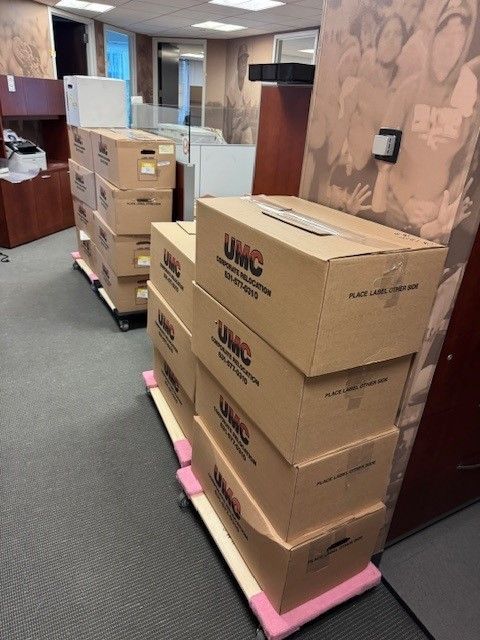September 25, 2025
This article explores the pivotal decision-making process involved in determining the most strategic timing for a corporate relocation. By examining various internal and external factors, businesses can navigate this complex transition with far-sighted planning and strategic execution. Corporate moves involve multifaceted considerations that impact not only the business’s bottom line but also its employees and client relations. Timing these transitions effectively is critical, as it can determine the success of the move and the prosperity of the business afterward. This comprehensive exploration will delve into diverse factors and real-world experiences to provide a nuanced understanding of corporate relocation timing.
Understanding the Corporate Moving Landscape
Corporate moving encompasses the relocation of a business's operations from one location to another. This process involves significant logistical planning, including the transfer of assets, data, and personnel. While the physical movement is a major component, corporate relocation also pertains to integrating new markets and restructuring operational processes. The scope of corporate moving can vary from small-scale shifts within the same city to international relocations involving complex regulatory compliance. Understanding this landscape is essential for strategizing the timing and execution of a move.
Corporate moves differ from residential moves not just in scale but in complexity. They require coordination across multiple departments, each with unique needs and goals. Often, these moves are undertaken to improve operational efficiency by accessing more robust infrastructure or closer proximity to required resources. The scope can encompass optimizations in supply chain logistics and enhanced customer engagement opportunities. Recognizing the multifaceted nature of corporate moving helps stakeholders properly allocate resources for planning and execution.
This broad perspective on corporate moving underscores its strategic importance. Relocation decisions are typically influenced by a blend of internal objectives and external pressures. Businesses might move to capitalize on market opportunities, reduce operational costs, or respond to demographic changes. The timing of these moves, therefore, plays a critical role in fulfilling desired objectives while managing potential disruptions.
Exploring the Corporate Moving Industry
The corporate moving industry is a dynamic sector characterized by varied service offerings. These range from logistics and transportation to consultancy services that guide businesses through the complexities of relocation. Various stakeholders, including real estate firms, project management specialists, and IT service providers, play pivotal roles in successful corporate moves. The industry has seen significant growth due to globalization and increasing demand for strategic relocations. Understanding this industry helps businesses align with the right partners and strategies for their relocation projects.
According to Market Growth Reports, more than 36,000 commercial relocations occur across North America yearly, with the average project covering approximately 4,600 square feet of space. This figure highlights the scale and prevalence of corporate moving while emphasizing the specialized expertise required for success. These moves often involve strategic planning around factors such as timing, cost, and resource allocation. Understanding the industry landscape can yield valuable insights into prevailing trends and practices, helping businesses make informed decisions about relocation.
Technological advancements and innovations significantly influence corporate moving. Automation, data analytics, and digital platforms facilitate more efficient resource management and strategic planning. Emerging trends such as flexible office spaces and remote work environments are reshaping traditional moving activities. By leveraging services and technological advancements within the industry, businesses can effectively handle transitions, reduce costs, and minimize operational disruptions. This evolving landscape requires ongoing adaptation and strategic foresight to maximize the benefits of a corporate move.
Identifying Key Reasons for Corporate Moving
Several motivators drive businesses to consider corporate relocation. One key reason is access to a larger talent pool in different geographic areas. By moving to locations with skilled labor availability, businesses can enhance their competitive edge. Cost reduction also plays a significant role, as relocating to regions with lower operational expenses can boost profitability. Furthermore, strategic relocation offers proximity to key markets or partners, enhancing customer engagement and supply chain efficiency.
Businesses may also relocate in response to changes in the regulatory or economic environment. New tax incentives, changes in trade agreements, or shifts in consumer demographics can make certain areas more appealing. Relocation can help businesses capitalize on these changes by providing better positioning relative to competitors. In some cases, relocations are driven by a desire for sustainability, as businesses seek locations that allow for eco-friendly operations. In all cases, determining the right time for relocation depends on understanding the underlying motivators.
Internal strategic objectives often align with external pressures, further influencing relocation decisions. For example, a business focused on growth might move to an area with a burgeoning industry presence. Each of these drivers emphasizes the complex interplay between strategic planning and market dynamics, underlining the importance of timing and execution in corporate moving.
Assessing the Global Impact on Corporate Moving
Globalization has had a profound impact on corporate moving, opening businesses to opportunities and challenges on an international scale. It allows companies to explore new markets, tap into global talent pools, and optimize their supply chains. However, it also introduces complexities such as regulatory compliance and cultural adaptation. Businesses must navigate these challenges judiciously, ensuring that relocations align with global strategies and objectives. The dynamic nature of globalization requires continued vigilance and adaptability in relocation planning.
As businesses expand globally, corporate moving becomes an essential component of strategic growth. By relocating to international markets, they can access new customer bases and strengthen their global brand. This expansion often involves meticulous planning to mitigate risks associated with cross-border operations. Understanding international markets, partners, and legal frameworks is crucial for successful relocations. Globalization emphasizes the interconnectivity of markets, making it imperative for businesses to assess the timing and location of their moves carefully.
At the same time, globalization offers a wealth of tools and resources to support corporate moves. Digital communication platforms, real-time data access, and advanced analytics aid in decision-making and planning. These resources help businesses execute timely and efficient relocations, ensuring continuity in operations and communication. The global landscape thus plays a critical role in corporate moving decisions, influencing timing, planning, and execution.
Exploring Emerging Trends in Corporate Moving
Corporate moving has evolved with several innovations, fostering efficiency and strategic alignment. Flexible office spaces provide adaptable environments, reducing the need for permanent relocations while offering operational flexibility. Co-working spaces and shared resources cater to businesses seeking agility in location decisions. Equally, virtual and remote work solutions enable organizations to decentralize their operations, minimizing physical moving requirements while expanding their geographical reach. These trends highlight a shift towards more adaptable and responsive corporate strategies.
Another transformative innovation is the use of data analytics in planning relocations. Robust data enables businesses to assess location viability, cost-benefit scenarios, and market opportunities. Predictive analytics provide insights into future trends, supporting decision-making and timing optimization. Technology also streamlines communication and coordination across stakeholders, ensuring that relocations align with broader business objectives. These advancements reshape traditional moving processes, allowing for more precision and strategic flexibility.
The integration of environmental considerations into corporate moving is another significant trend. Sustainable relocation practices encourage consideration of carbon footprints, resource efficiency, and sustainable community engagement. Businesses aim to meet regulatory standards while enhancing brand reputation through responsible practices. Incorporating such innovations into corporate moving plans can deliver tangible benefits in cost savings and improved stakeholder relations.
Considering Internal Factors That Shape Timing
Internal factors such as growth trajectories, human resources, technology upgrades, financial health, and long-term strategy strongly affect the timing of corporate moving. When businesses expand, spatial needs often increase, requiring timely relocation to accommodate staff and infrastructure. Aligning moves with growth ensures seamless transitions without halting momentum. Human resources considerations are also pivotal, as employee satisfaction and retention directly affect the success of relocation. Ensuring that staff are engaged and supported during the process can significantly ease transitions.
Technology and infrastructure also play a role, as relocations often provide an opportunity to update systems and implement smart solutions. Financial readiness further influences timing, with businesses needing adequate resources to handle both expected and unforeseen costs. Finally, alignment with long-term strategy ensures relocations are not only operationally necessary but also supportive of future market goals.
Corporate moving is far more than a logistical challenge—it is a strategic decision that impacts growth, employees, and overall market positioning. By carefully considering internal dynamics and external market forces, businesses can identify the most advantageous timing for relocation. Partnering with experienced providers helps ensure smooth execution, strategic alignment, and minimal disruption. When guided by foresight and expertise, corporate moving can become a powerful tool for growth, adaptability, and long-term success in a competitive business environment. Contact UMC Moving Company, Inc for all your corporate moving needs!






